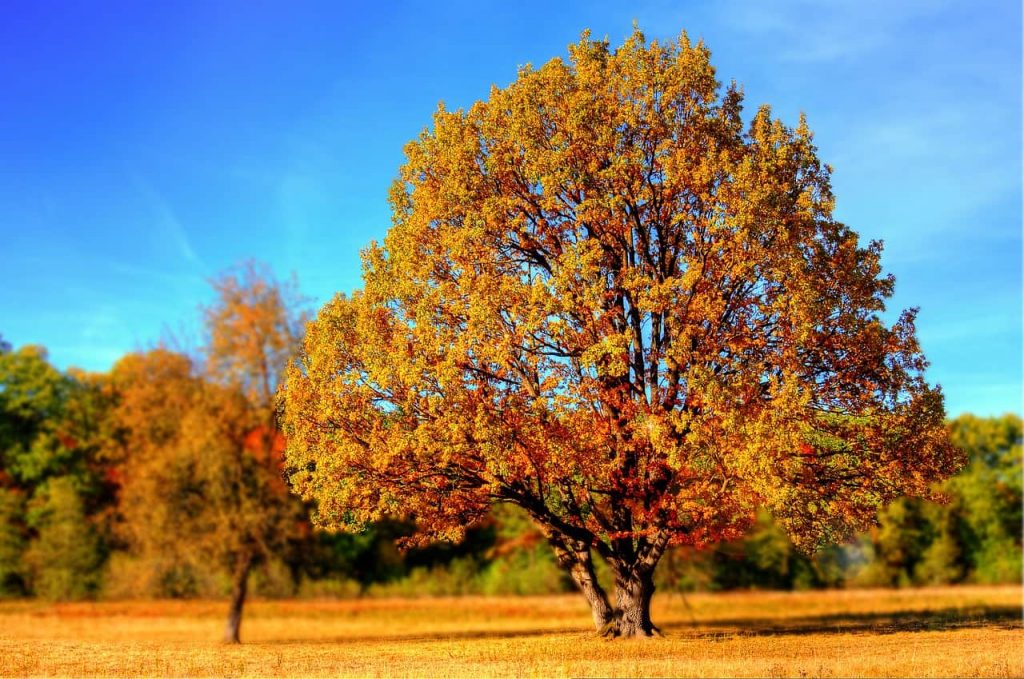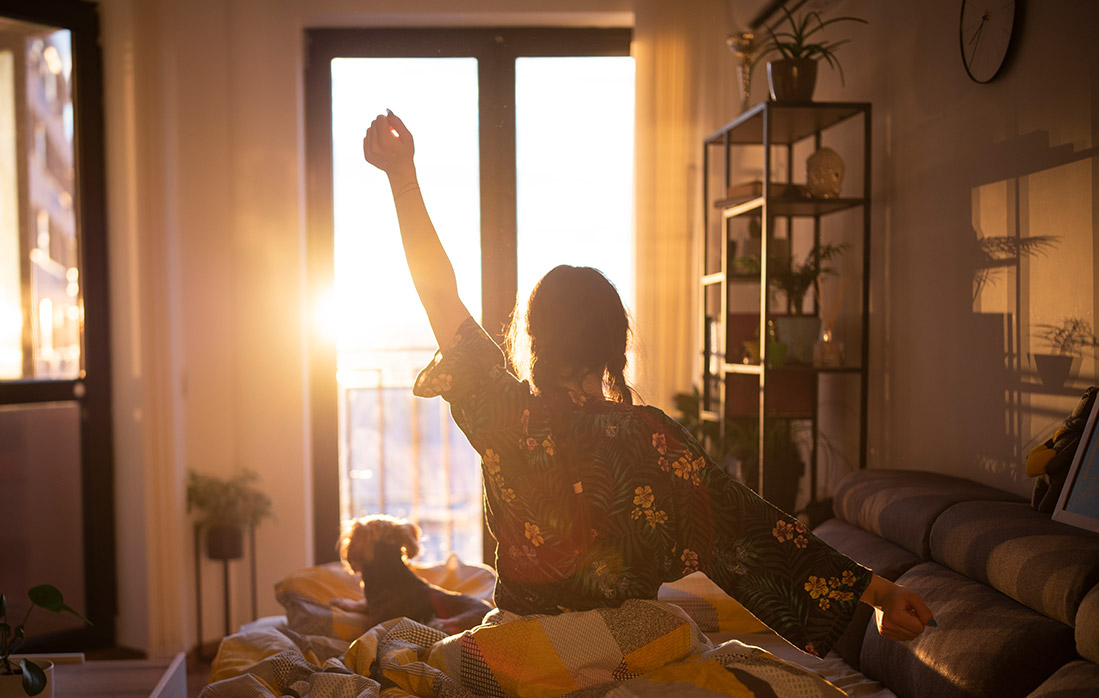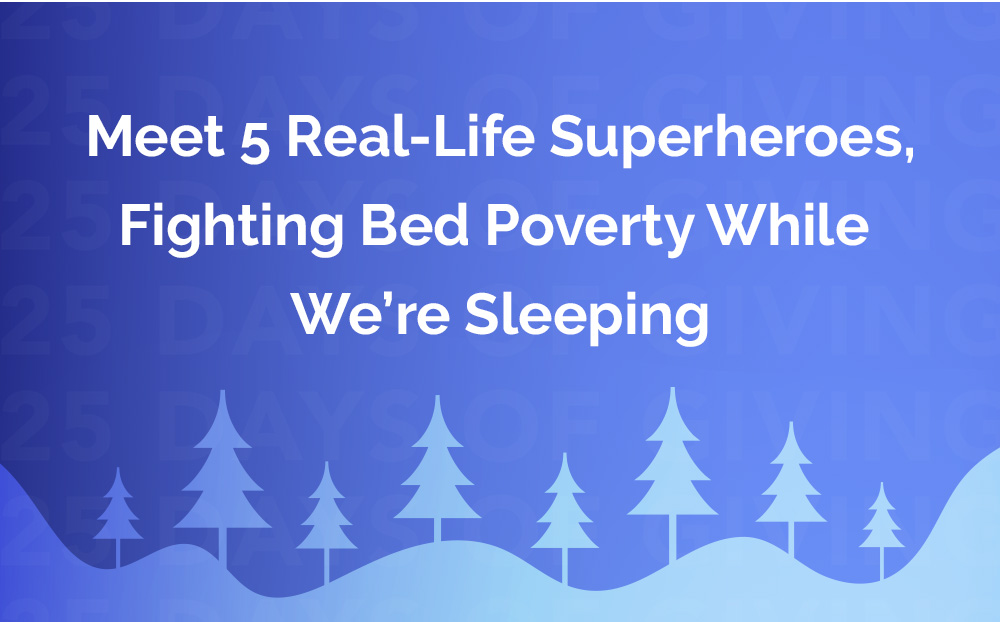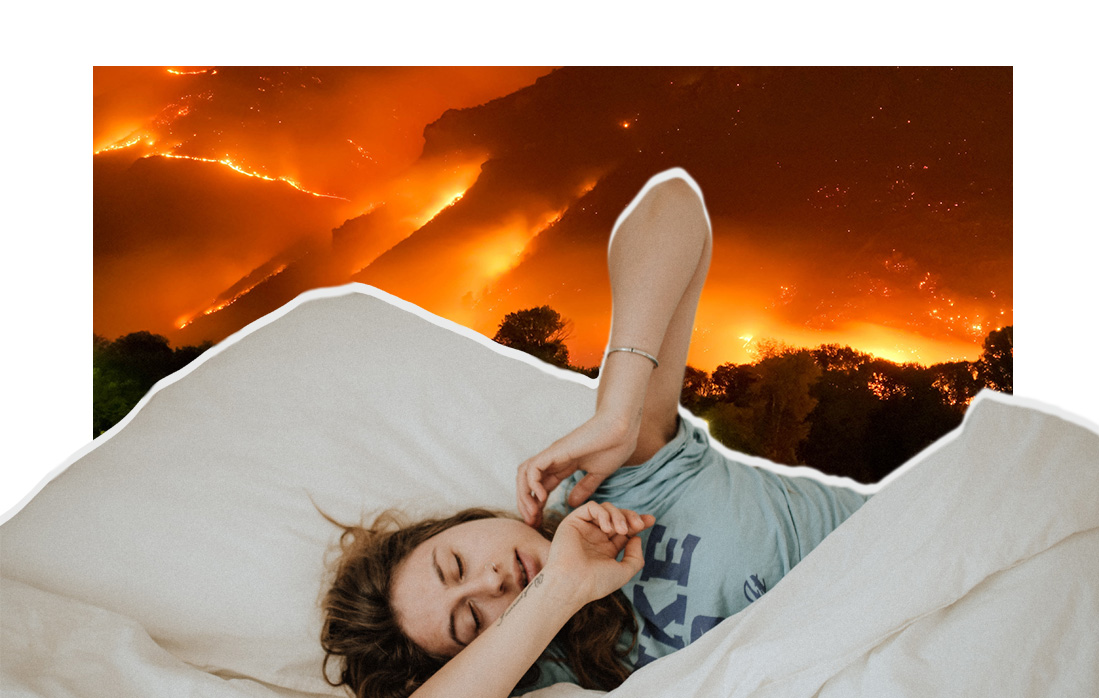
While city living is often heralded for offering the best retail therapy and enough dining options to satisfy any craving, anyone who’s ever lived in or around a concrete jungle can tell you that they are also famed for notorious sleep stealers like noise and light. (1) City living and good sleep quality don’t make great bedfellows, but new research shows that your quest for better sleep may end on that tree-lined cul-de-sac you’ve been eyeing.
Using survey data from an 18-country sample, researchers examined the association between “nature exposure” and insufficient sleep (defined as less than 6 hours per day). (2) To address the multifaceted nature of nature, researchers studied six distinct types of natural settings, including:
- Streetscape greenery
- Blue view from home,
- Green space within 1 km
- Coast within 1 km
- Green space visits
- Blue space visits
Ultimately, the researchers found that out of the six natural settings, only four were linked to improved sleep — streetscape greenery, blue views from home, green space visits, and blue space visits. Green spaces and the coast within 1 km — not so much.
The researchers believe that the mechanisms at work here lie with mediators like improved mental well-being and increased physical activity. Perceived streetscape greenery and views of blue spaces from home were associated with improved mental well-being, which, in turn, improved sleep duration. Visits to green and blue spaces were associated with higher levels of physical activity and better mental well-being, of which improved sleep is almost a natural byproduct.
To Ray Christner, Psy.D., a licensed psychologist specializing in cognitive behavioral therapy, it’s no surprise that nature exposure profoundly affects our well-being and, more specifically, our sleep.
“Spending time in nature has a multifaceted impact on our well-being and sleep due to several interconnected reasons,” he says. “First, nature acts as a buffer against urban stressors such as noise and air pollution, which can disrupt sleep patterns. Second, natural environments can offer psychologically restorative experiences that enhance mental well-being by reducing stress and improving mood. (3) This psychological uplift is important when preparing the body for a good night’s sleep, as stress and anxiety are known obstacles to sleep quality.” (4) And finally, just as the researchers note in the study, Christner says, “Nature encourages physical activity, which has been shown to support healthier sleep duration. When you combine these factors—environmental benefits, psychological renewal, and encouragement of physical activity—it makes sense why nature has such a significant impact on improving sleep and overall well-being.”
Regarding sleep science, Natalie Rosado, LMHC and Founder of Tampa Counseling Place says, “Being in natural environments can lower cortisol levels, the stress hormone associated with sleep disturbances.” (5) In addition to hormonal changes, she adds that improved sleep could come courtesy of one thing that’s inherent to natural settings — light. “Exposure to natural light during the day helps regulate our circadian rhythm, which governs our sleep-wake cycle, she says. “This natural light exposure helps synchronize our internal body clock, making it easier to fall asleep at night and wake up feeling refreshed in the morning.” (6)
Alternatives for Die-Hard City Dwellers?
If tree-lined streets are hard to come by in your neck of the woods, the study clearly offers a more budget-friendly alternative than forking out $700K for a house in the suburbs — visiting green and blue spaces. But while camping trips and a beach day may do it for some, those seeking options a little closer to home may be able to capitalize on the benefits of green and blue views by making some strategic decor changes.
Add Plants to Your Bedroom
While noting that the extent of these benefits might not fully match the experience of being outdoors, Christner says bringing the outdoors in could be a viable option for improving sleep in a city setting. “Having plants in the bedroom could mirror some of the beneficial effects of nature on sleep, albeit on a smaller scale,” he says. “First, indoor plants can improve air quality. (7) More subtly, however, plants can create a calming, uplifting environment, enhancing mental well-being by offering a visual connection to nature. (8) This can help lower stress and prepare our minds for rest, mimicking the effect of being in nature.”
Agreeing that “plants can positively impact sleep quality,” Rosado cautions us to do some research on the best option and keep it simple. “Just make sure to pick plants that won’t cause you any extra hassle,” she says. “Choose low-maintenance plants that do not require excessive watering or maintenance, as the presence of mold or pests could have adverse effects on sleep and overall health.”
Bump up the Blue around Your Home
“Colors play a significant role in our psychological response to environments,” says Christner.
“For instance, blue hues are often associated with calmness and can mimic the tranquil aspects of water or the sky, potentially aiding in relaxation and better sleep.” (9) He adds, “The findings suggest that the visual aspects of our environment, including colors and decor inspired by nature, could influence our sleep quality. So, incorporating natural themes or elements into bedroom decor could invoke a sense of tranquility and connection to the outdoors, promoting an environment conducive to sleep.” Overall, Christner says, “The research offers a compelling argument for considering how we color and decorate our living spaces, especially areas designated for rest, to mimic the calming effects of nature.”

10 Ways To Get More Natural Light During the Day

Meet 5 Real-Life Superheroes Fighting Bed Poverty, One Mattress at a Time

Moving? Don’t Let It Affect Your Sleep

How Wildfires Impact Sleep: Navigating the Third Pillar of Health When Air Quality is Poor
Sources
1. Bion V, Lowe AS, Puthucheary Z, Montgomery H. Reducing sound and light exposure to improve sleep on the adult intensive care unit: An inclusive narrative review. J Intensive Care Soc. 2018;19(2):138-146. doi:10.1177/1751143717740803
2. Martin, L., White, M. P., Elliott, L. R., Grellier, J., Astell-Burt, T., Bratman, G. N., Lima, M. L., Nieuwenhuijsen, M., Ojala, A., Roiko, A., Van den Bosch, M., & Fleming, L. E. (2024). Mechanisms underlying the associations between different types of nature exposure and sleep duration: An 18-country analysis. Environmental Research, 250, 118522. https://doi.org/10.1016/j.envres.2024.118522
3. Ewert A, Chang Y. Levels of Nature and Stress Response. Behav Sci (Basel). 2018;8(5):49. Published 2018 May 17. doi:10.3390/bs8050049
4. Albrecht-Bisset, M., Wang, D., Martin, K., Côté, P., & Papaconstantinou, E. A. (2023). A cross-sectional study of the association between sleep quality and anxiety in postsecondary students in Ontario. Sleep Epidemiology, 3, 100062. https://doi.org/10.1016/j.sleepe.2023.100062
5. Jimenez MP, DeVille NV, Elliott EG, et al. Associations between Nature Exposure and Health: A Review of the Evidence. Int J Environ Res Public Health. 2021;18(9):4790. Published 2021 Apr 30. doi:10.3390/ijerph18094790
6. Blume C, Garbazza C, Spitschan M. Effects of light on human circadian rhythms, sleep and mood. Somnologie (Berl). 2019;23(3):147-156. doi:10.1007/s11818-019-00215-x
7. Hassan, Z. (2021). The Role of Indoor Plants in Air Purification and Human Health in the Context of COVID-19 Pandemic: A Proposal for a Novel Line of Inquiry. Frontiers in Molecular Biosciences, 8, 709395. https://doi.org/10.3389/fmolb.2021.709395
8. Yeo, Lee Bak. (2020). Psychological And Physiological Benefits Of Plants In The Indoor Environment: A Mini And In-Depth Review. International Journal of Built Environment and Sustainability. 8. 57-67. 10.11113/ijbes.v8.n1.597.
9. C, Matthew., E.a., Boy, B., Joflix, Doctors, T. S., Admin, Mona, Blissful, Mineo, J., Matt, Chicken, N., Bendaj, A., Udoma, U., Jin, Fer, Ghost, C. T. F., Krishnan, H., Ruben, J., Anish, … John, S. (2024, February 15). Blue color: Psychology, meaning and symbolism. Color Psychology. https://www.colorpsychology.org/blue/
Christner, Ray. Author interview. April 3, 2024.
Rosado, Natalie. Author interview. April 4, 2024.
